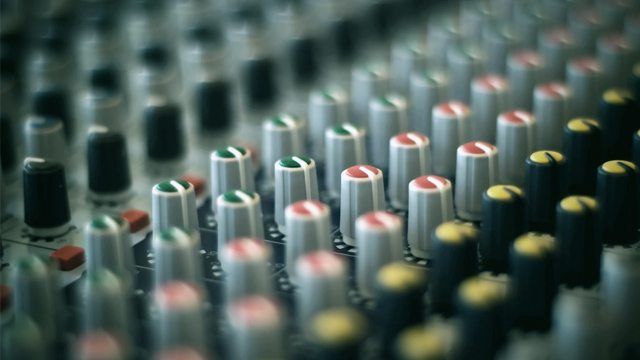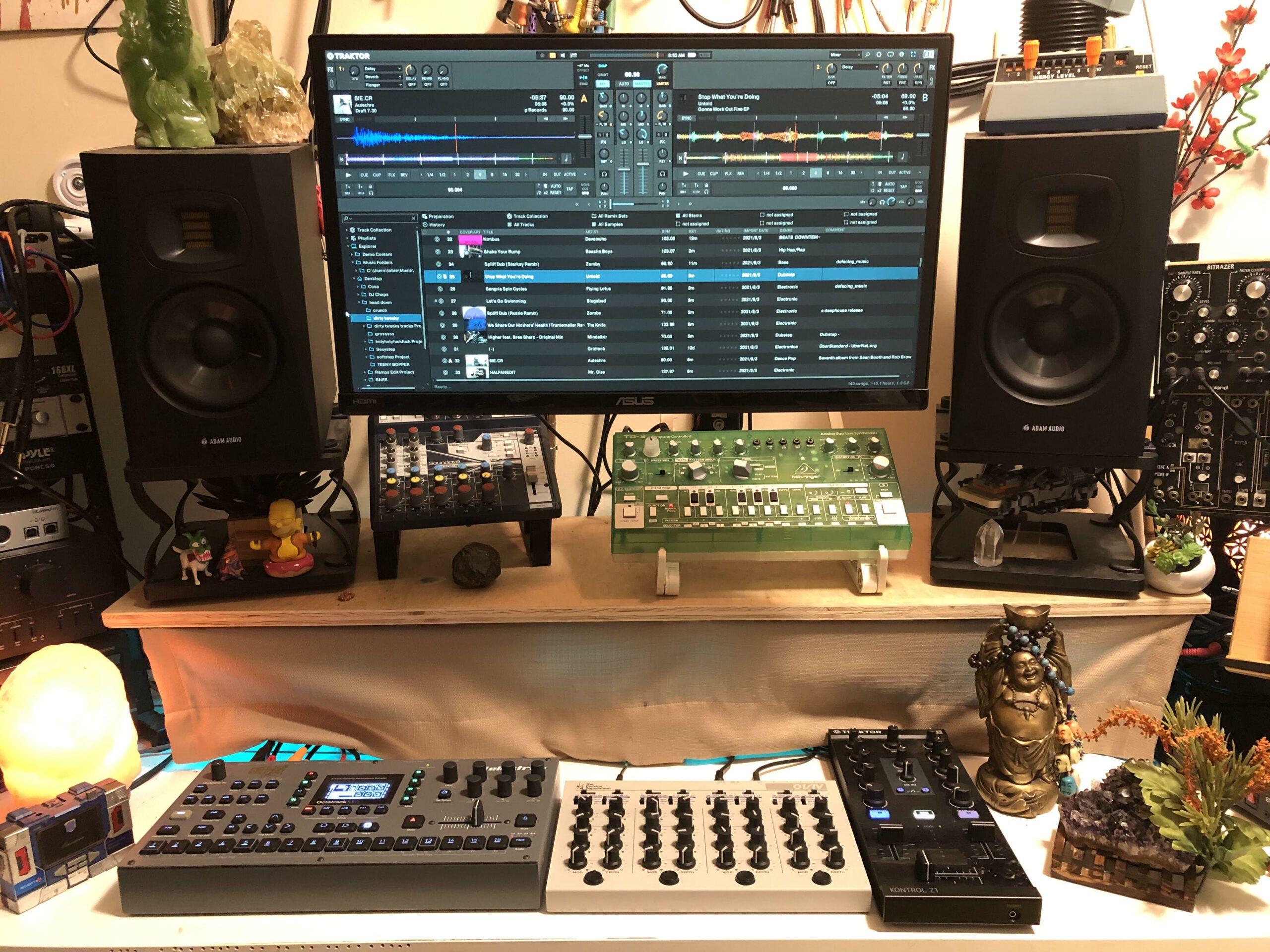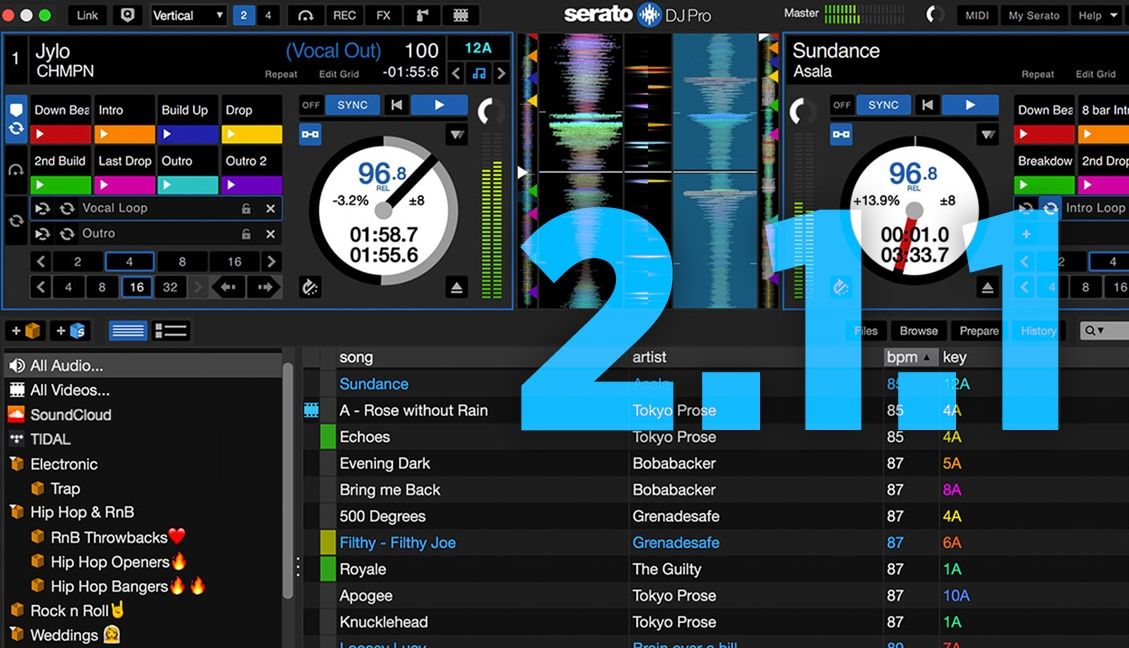Today we’re going to take a quick look into the wonderful world of the controllers we poke, push, pull, twist and waggle on a daily basis. Maybe you’re building your own controller, or maybe you’re looking into buying a controller and need to know exactly what each control will be most useful for. Maybe you’ve got a controller that you’ve always wondered whether you could modify. Read on as we take the journey.
Now, there are TONS of ways of interacting with your equipment’s little brain – some of them are fairly standard, like the ubiquitous black and white keys on a keyboard, some of them are lesser spotted, like the infrared light beams, and some are just plain wacky. We’ve made an effort to include most of the controls that you’ll encounter on the majority of mainstream controllers and give one of the main pros and cons for each, but we’d love to hear from you guys when it comes to your favourite bizarre control methods too so make sure you get at us in the comments if you know something cool!
IT (USUALLY) STARTS OFF ANALOGUE
Most analogue controls that have a range of values – at least, those on a DJ controller – are based around potentiometers (or ‘pots’). The device feeds the control a voltage, and then depending on the physical distance through the control’s part of the circuit, which is the part you change by moving the fader or twisting the knob, the signal encounters varying amounts of resistance. The difference between what goes in and what comes out is read by the device, and then digitised into a number that your computer can understand.
Pots aren’t the be all and end all of control though, as you’ll see. When it comes to analogue controls, the physical control itself is only part of the story. The circuit needs to define how the signal from the control is read – a prime example is the curve with which volume is adjusted on a DJ mixer. If the control is going to be used by digital equipment, the signals it sends need to be turned into digital information, too.
Without further ado, let’s dive in…
THE LIST
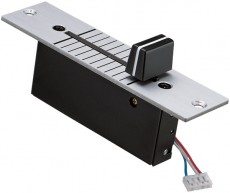 Linear faders are ideal pot based controls, as they have a min and max point at either end. They come in various lengths, and the quality of the fader will determine its weight, smoothness, and how close to the edge of travel the fader can get before it stops making useful movement.
Linear faders are ideal pot based controls, as they have a min and max point at either end. They come in various lengths, and the quality of the fader will determine its weight, smoothness, and how close to the edge of travel the fader can get before it stops making useful movement.
PRO: Great for flinging from end to end and making quick movements
CON: Smooth precise movements are harder
Motorised faders have an output stage as well as an input, which allows them to move in response to software control. They’re typically found on higher end equipment and production mixers, to mitigate the disparity between the software display and the hardware. Stanton’s SCS1d has one for its pitch fader to enable it to switch decks automatically.
PRO: Total recall
CON: Price!
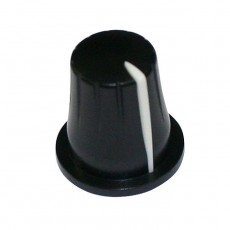 7o’clock-5o’clock rotary knobs are the classic rotary pot. Because they have a minimum and maximum value on the dial and a visual indicator of what value they’re set to, these knobs are great for things like EQ and controls that will always control a single parameter. Detents in the shaft also allow for an extra layer of tactile feedback – for instance, a click at 12o’clock of a dial which allows you to feel when the pot is central.
7o’clock-5o’clock rotary knobs are the classic rotary pot. Because they have a minimum and maximum value on the dial and a visual indicator of what value they’re set to, these knobs are great for things like EQ and controls that will always control a single parameter. Detents in the shaft also allow for an extra layer of tactile feedback – for instance, a click at 12o’clock of a dial which allows you to feel when the pot is central.
PRO: Immediate tactile feedback
CON: Not great for switching controls in software
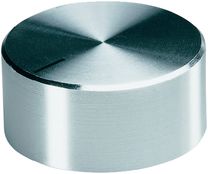 Infinite motion rotary knobs are very similar to standard restricted motion knobs, although they can often be set to require varying revolutions to go from their minimum to maximum value. When the minimum or maximum value is reached, the pot isn’t capable of sending any more information but it will still move freely. In general these types of pots are handy for controls that will be frequently switched in software to control different parameters and thus benefit from not having an absolute position marked on the dial. At first they seem good for tasks like library navigation, too, but the fact that they will only function for so many turns in one direction makes them less useful for this purpose.
Infinite motion rotary knobs are very similar to standard restricted motion knobs, although they can often be set to require varying revolutions to go from their minimum to maximum value. When the minimum or maximum value is reached, the pot isn’t capable of sending any more information but it will still move freely. In general these types of pots are handy for controls that will be frequently switched in software to control different parameters and thus benefit from not having an absolute position marked on the dial. At first they seem good for tasks like library navigation, too, but the fact that they will only function for so many turns in one direction makes them less useful for this purpose.
PRO: Great for switching controls in software on the same knob
CON: Continous motion in one direction will eventually stop sending messages
Rotary encoders measure the angle of the shaft as it turns. This means that they can be used as dials for infinite motion such as navigating through a playlist, can have the control they’re assigned to freely swapped in software without any disparity between the actual value and software value. They may sound like the perfect control, but their increased cost compared to pots (making them a rarer sight on controllers) means that when a pot will do, such as in an EQ knob, it makes sense to use one.
PRO: Extremely versatile
CON: Price
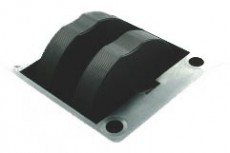 Pitch wheels Almost all pitch wheels are sprung, so that they always return to their default value – but electrically they are usually the same as faders. In the MIDI spec, the pitch wheel is the only control that is set by default to send high resolution messages – rather than 128 points, it has 16,384.
Pitch wheels Almost all pitch wheels are sprung, so that they always return to their default value – but electrically they are usually the same as faders. In the MIDI spec, the pitch wheel is the only control that is set by default to send high resolution messages – rather than 128 points, it has 16,384.
PRO: Transmits high res in MIDI spec
CON: Sometimes ‘hard wired’ to control pitch only on equipment
Mod Wheels are generally pots. Almost all keyboards will have pitch and mod wheels even in lieu of other controls. They’re handy for quick control of sounds when playing a keyboard, and when you’re DJing its size lends itself to the ‘big knob’ that modulates your super effects.
PRO: Combines fader and knob advantages
CON: Not available on all controllers
 Joysticks are, of course, capable of adjusting two parameters at once: one for each axis. Most joysticks on musical equipment are analogue and control two potentiometers; they’re not to be confused with arcade gaming joysticks in the light of the arcade button phenomenon (they’re switch based and only have on/off in each direction). Some keyboards combine their pitch and mod controls into a single joystick, and some, like the Novation Remote SL series, allow you to switch between sprung and free moving feel. It can be handy to have them set to something like cutoff and resonance on a filter, but why not try something like reverb depth and a noise gate, or mix it up even more for individual and organic results?
Joysticks are, of course, capable of adjusting two parameters at once: one for each axis. Most joysticks on musical equipment are analogue and control two potentiometers; they’re not to be confused with arcade gaming joysticks in the light of the arcade button phenomenon (they’re switch based and only have on/off in each direction). Some keyboards combine their pitch and mod controls into a single joystick, and some, like the Novation Remote SL series, allow you to switch between sprung and free moving feel. It can be handy to have them set to something like cutoff and resonance on a filter, but why not try something like reverb depth and a noise gate, or mix it up even more for individual and organic results?
PRO: Control two parameters independently with one hand
CON: Accuracy is an issue
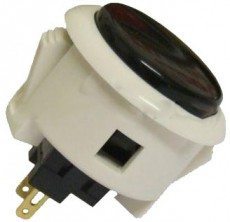 Buttons, certainly the mechanical ones that we encounter most often on our controllers, are some of the simplest electrical controls. They are either on or off – the circuit is either made or broken. Our MIDI Fighters use Sanwa arcade buttons, which contain a mechanical push to make microswitch which offers an extremely sensitive and precise feel. Most push switches are designed with much more tolerance in their actuation and release speed than pro quality microswitches as their focus is generally not on fast, successive presses, and it’s worth bearing in mind that the action on push switches is mechanical and thus will wear out, so it pays to use pro quality, branded parts in situations where you will be using the button as a performance tool.
Buttons, certainly the mechanical ones that we encounter most often on our controllers, are some of the simplest electrical controls. They are either on or off – the circuit is either made or broken. Our MIDI Fighters use Sanwa arcade buttons, which contain a mechanical push to make microswitch which offers an extremely sensitive and precise feel. Most push switches are designed with much more tolerance in their actuation and release speed than pro quality microswitches as their focus is generally not on fast, successive presses, and it’s worth bearing in mind that the action on push switches is mechanical and thus will wear out, so it pays to use pro quality, branded parts in situations where you will be using the button as a performance tool.
Some buttons rely on surface mounted traces being actuated by the action of pressing the button pushing a conductive layer against the circuit and connecting them. These typically provide a less precise feel, but can greatly reduce the cost and make large button arrays feasible – Monome inspired devices are a good example of this.
A latching switch, ie one that toggles from one position to the other each time it is pressed, can be useful for tactile feedback as to the button’s position. However it can also cause problems with the button becoming out of sync with the control in your software, especially if it isn’t tied to a single specific control.
PRO: Potential to have extremely quick pressing action
CON: On/Off only
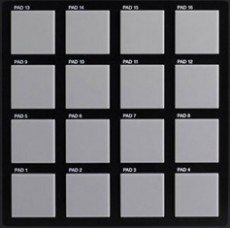 Pads differ from buttons, at least in our nomenclature, in that they are not simply on or off but instead transmit pressure information. When a pad is hit, it connects traces and a piezometer measures how hard the traces are being pushed together. There are lots of different applications for pressure pads, all of which are tailored to individual feels – Akai’s MPC pads provide a very different experience to electronic drum kits, for instance, but they’re based on the same technology. Typically pads will be used as notes when hooking them up to MIDI but there’s nothing to stop you using them simply as triggers, as their advantage tends to be in their large size and uncluttered interface.
Pads differ from buttons, at least in our nomenclature, in that they are not simply on or off but instead transmit pressure information. When a pad is hit, it connects traces and a piezometer measures how hard the traces are being pushed together. There are lots of different applications for pressure pads, all of which are tailored to individual feels – Akai’s MPC pads provide a very different experience to electronic drum kits, for instance, but they’re based on the same technology. Typically pads will be used as notes when hooking them up to MIDI but there’s nothing to stop you using them simply as triggers, as their advantage tends to be in their large size and uncluttered interface.
PRO: Fast action with expressive pressing
CON: Can be less precise than buttons
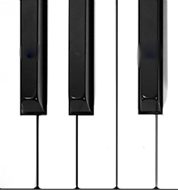 Keys might seem fairly self explanatory, but there are different types of keyboards, some with more functionality than others. Most keys have velocity sensitivity, which measures how quickly a key is struck (and usually speed and firmness go hand in hand) by having a staggered sensor with two points, one of which is slightly higher up than the other and thus makes its connection with the board at the bottom slightly later. Some will also have Aftertouch, which measures pressure on an already pressed key much like a pad. MIDI note information sends note on and off as well as velocity and aftertouch, and as such MIDI notes have slightly more capability than CC messages.
Keys might seem fairly self explanatory, but there are different types of keyboards, some with more functionality than others. Most keys have velocity sensitivity, which measures how quickly a key is struck (and usually speed and firmness go hand in hand) by having a staggered sensor with two points, one of which is slightly higher up than the other and thus makes its connection with the board at the bottom slightly later. Some will also have Aftertouch, which measures pressure on an already pressed key much like a pad. MIDI note information sends note on and off as well as velocity and aftertouch, and as such MIDI notes have slightly more capability than CC messages.
PRO: Usually lots of keys on a keyboard controller
CON: Difficult to press quickly due to deep action
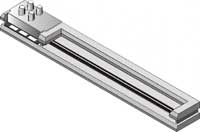 Ribbon Controllers aren’t just the poor man’s touch screen, they’re a rugged, capable way of registering touch. They work by registering an electrical charge where you press the strip, and then measuring the distance from the touch and either end of the strip. You might be surprised at how fun they are to use if you’ve never run your finger down one before, but they require a slightly firmer touch than a touch screen.
Ribbon Controllers aren’t just the poor man’s touch screen, they’re a rugged, capable way of registering touch. They work by registering an electrical charge where you press the strip, and then measuring the distance from the touch and either end of the strip. You might be surprised at how fun they are to use if you’ve never run your finger down one before, but they require a slightly firmer touch than a touch screen.
PRO: Rugged compared to touch screens
CON: There’s usually a bit of a compromise in sensitivity
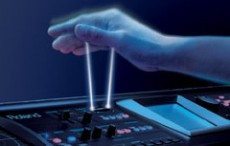 Infrared Beams aren’t exactly mainstays in electronic music, but Roland have been making their D-Beam since 1995 and more recently Beamz have been marketing their product to DJs. The basic premise of a beam is simple; the beam itself is a rangefinder device, and so constricting the beam with your hand, or foot, or comedy oversized table tennis bat, registers with the receiver.
Infrared Beams aren’t exactly mainstays in electronic music, but Roland have been making their D-Beam since 1995 and more recently Beamz have been marketing their product to DJs. The basic premise of a beam is simple; the beam itself is a rangefinder device, and so constricting the beam with your hand, or foot, or comedy oversized table tennis bat, registers with the receiver.
PRO: Visually distinctive
CON: Maybe a bit too visually distinctive?!
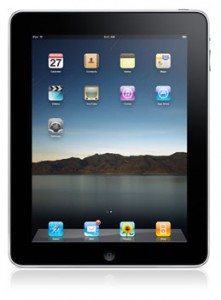 Touch Screens are really beginning to step into the limelight, if they haven’t already. The arrival of iPad and the slew of competitors has shown what can be done with touch screens, and we could really write an entire article about touch screen technology – this is just a taster. Touch screens have been around for a long time in some form or other, and there are a few types. Resistive touch screens, like for instance the one on the Nintendo DS, register when they are touched by way of two conductive layers being pressed together. This means that only one press can be registered at a time. Mutual capacitive touch, which is the system employed by modern touch screen notepads and phones, registers when a ‘virtual ground’ – ie our own electrically charged finger – touches the screen as it changes the capacitance of a capacitive layer on the screen. Because there are vast amounts of capacitors in a grid on (for instance) an iPad, this allows multi touch control.
Touch Screens are really beginning to step into the limelight, if they haven’t already. The arrival of iPad and the slew of competitors has shown what can be done with touch screens, and we could really write an entire article about touch screen technology – this is just a taster. Touch screens have been around for a long time in some form or other, and there are a few types. Resistive touch screens, like for instance the one on the Nintendo DS, register when they are touched by way of two conductive layers being pressed together. This means that only one press can be registered at a time. Mutual capacitive touch, which is the system employed by modern touch screen notepads and phones, registers when a ‘virtual ground’ – ie our own electrically charged finger – touches the screen as it changes the capacitance of a capacitive layer on the screen. Because there are vast amounts of capacitors in a grid on (for instance) an iPad, this allows multi touch control.
PRO: Ushers in a new era of interface design
CON: Lack of tactile feedback
So, there we have it. Remember, this isn’t everything, and if you’re interested in building your own controller or modifying your existing one then don’t be afraid to experiment with weird and wonderful controls from your local electronics store – you’ll need to do the research into compatibility of the thing you have your eye on, the resistance you need to adhere to, and make sure that your components will handle the wattage of the circuit, of course, but there’s no reason why you can’t turn your controller into something that looks more like a mad scientist’s secret machine than a miniature version of a couple of decks and a mixer with the right amount of planning and research!


